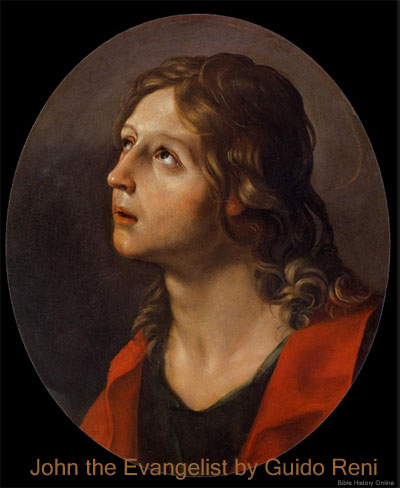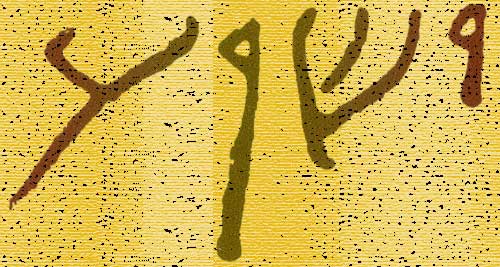8. dead bodies--So Vulgate, Syriac, and
ANDREAS. But A, B, C, the oldest manuscripts, and
Coptic read the singular, "dead body." The two fallen in one
cause are considered as one.
the great city--eight times in the Revelation elsewhere
used of BABYLON
(Re 14:8;
16:19; 17:18; 18:10, 16, 18, 19, 21).
In
Re 21:10
(English Version as to the new Jerusalem), the oldest
manuscripts omit "the great" before city, so that it forms no
exception. It must, therefore, have an anticipatory reference to the
mystical Babylon.
which--Greek, "the which," namely, "the city
which."
spiritually--in a spiritual sense.
Sodom--The very term applied by
Isa 1:10
to apostate Jerusalem (compare
Eze 16:48).
Egypt--the nation which the Jews' besetting sin was to lean
upon.
where . . . Lord was crucified--This identifies the
city as Jerusalem, though the Lord was crucified outside of the
city. EUSEBIUS mentions that the scene of
Christ's crucifixion was enclosed within the city by Constantine; so it
will be probably at the time of the slaying of the witnesses. "The
beast [for example, Napoleon and France's efforts] has been long
struggling for a footing in Palestine; after his ascent from the
bottomless pit he struggles much more" [BENGEL].
Some one of the Napoleonic dynasty may obtain that footing, and even be
regarded as Messiah by the Jews, in virtue of his restoring them to
their own land; and so may prove to be the last Antichrist. The
difficulty is, how can Jerusalem be called "the great city," that is,
Babylon? By her becoming the world's capital of idolatrous apostasy,
such as Babylon originally was, and then Rome has been; just as she is
here called also "Sodom and Egypt."
also our--A, B, C, ORIGEN,
ANDREAS, and others read, "also their."
Where their Lord, also, as well as they, was slain. Compare
Re 18:24,
where the blood of ALL slain on
earth is said to be found IN BABYLON, just as in
Mt 23:35,
Jesus saith that, "upon the Jews and JERUSALEM"
(Compare
Mt 23:37, 38)
shall "come ALL the righteous blood shed upon
earth"; whence it follows Jerusalem shall be the last capital of the
world apostasy, and so receive the last and worst visitation of all the
judgments ever inflicted on the apostate world, the earnest of which
was given in the Roman destruction of Jerusalem. In the wider sense, in
the Church-historical period, the Church being the sanctuary, all
outside of it is the world, the great city, wherein all the martyrdoms
of saints have taken place. Babylon marks its idolatry,
Egypt its tyranny, Sodom its desperate corruption,
Jerusalem its pretensions to sanctity on the ground of spiritual
privileges, while all the while it is the murderer of Christ in the
person of His members. All which is true of Rome. So VITRINGA. But in the more definite sense,
Jerusalem is regarded, even in Hebrews
(Heb 13:12-14),
as the world city which believers were then to go forth from, in order
to "seek one to come."
JFB.
The Book of Revelation
Revelation 1:9-11 - I John, who also am your brother, and companion in tribulation, and in the kingdom and patience of Jesus Christ, was in the isle that is called Patmos, for the word of God, and for the testimony of Jesus Christ. I was in the Spirit on the Lord's day, and heard behind me a great voice, as of a trumpet, Saying, I am Alpha and Omega, the first and the last: and, What thou seest, write in a book, and send [it] unto the seven churches which are in Asia; unto Ephesus, and unto Smyrna, and unto Pergamos, and unto Thyatira, and unto Sardis, and unto Philadelphia, and unto Laodicea.
Revelation 19:11-16 - And I saw heaven opened, and behold a white horse; and he that sat upon him [was] called Faithful and True, and in righteousness he doth judge and make war. His eyes [were] as a flame of fire, and on his head [were] many crowns; and he had a name written, that no man knew, but he himself. And he [was] clothed with a vesture dipped in blood: and his name is called The Word of God. And the armies [which were] in heaven followed him upon white horses, clothed in fine linen, white and clean. And out of his mouth goeth a sharp sword, that with it he should smite the nations: and he shall rule them with a rod of iron: and he treadeth the winepress of the fierceness and wrath of Almighty God. And he hath on [his] vesture and on his thigh a name written, KING OF KINGS, AND LORD OF LORDS.
Revelation 22:18-20 For I testify unto every man that heareth the words of the prophecy of this book, If any man shall add unto these things, God shall add unto him the plagues that are written in this book: And if any man shall take away from the words of the book of this prophecy, God shall take away his part out of the book of life, and out of the holy city, and [from] the things which are written in this book. He which testifieth these things saith, Surely I come quickly. Amen. Even so, come, Lord Jesus.
Revelation in The New Testament - A Brief Overview

Painting of St. John the Evangelist by Reni - 1620
Introduction to The Book of Revelation
Brief Summary. John describes the seven churches in Asia, he records the visions that he received, and in the prophecy Jesus returns as the kinsman redeemer to claim this world as His inheritance. The final battle unfolds in a 7 year period through a series of seal, trumpet, and bowl judgements, He casts the antichrist and false prophet into the lake of fire and sets up the New Jerusalem, the new heaven and new earth for the redeemed. The book of Revelation is in harmony with the prophecies in the Old Testament especially the ones written by Ezekiel, Daniel and Zechariah.
Summary of The Book of Revelation
Author. John the apostle names himself as the one who wrote down what the Lord said through the angel. The earliest writers in the church like Justin Martyr, Irenaeus, Hippolytus, Tertullian, Clement of Alexandria and the Muritorian all credit John the apostle as author of the book of Revelation.
Date. John indicates that he was on the Island of Patmos when he received the prophecy (Revelation 1:9). According to tradition John wrote during the reign of the Emperor Domitian which would have been around 95 AD. Tradition also states that John was released the next year and was allowed to return to Ephesus. Domitian was perhaps the cruelest Emperor toward the Christians, demanding that he was to worshipped as deity, or be put to death.
Audience. John said that the prophecy was directed to the seven churches in Asia (Revelation 1:4).
Outline of the Book of Revelation
Description and Fate of False Teachers - 1:1-16
Encouragement to Believers in Christ - 1:17-25

The Name Jesus In Ancient Hebrew Text
"Yeshua" in First Century Hebrew Text. This is how the name "Jesus"
would have been written in ancient Hebrew documents. The four letters or
consonants from right to left are Yod, Shin, Vav, Ayin (Y, SH, OO, A).
Jesus is the Greek name for the Hebrew name Joshua or Y'shua which means
"The LORD or Yahweh is Salvation".
The Book of Revelation Resources
Map of the Roman Empire (14 A.D.) - This map reveals the Roman Empire during the time shortly after the birth of Jesus, in 14 AD at the time of the death of Augustus. The order which prevailed in this extensive empire, the good military roads, and the use of Koine Greek as the general language of culture throughout the area were among the factors which multiplied the rapid spread of the Gospel of Jesus Christ. (Color Map)
Map of Paul's First Missionary Journey (48 A.D.) - This map reveals the areas in Asia Minor where Paul visited in his first missionary journey. Around 48 AD, in the springtime, Paul and his companions Barnabas and Mark were sent on a mission from the church in Antioch. This would be the first of Paul's Missionary Journey's. (Color Map)
Map of Paul's Second Missionary Journey (51 A.D.) - This map reveals the areas in Asia and Greece where Paul visited in his second missionary journey. Paul re-visits a couple cities in Asia, one of which was Lystra where he was stoned and left for dead a few years earlier. He later has a vision that leads him over to Greece and Paul and his companions travel and minister in various cities in Greece (Philippi, Thessalonica, Berea, Athens and Corinth. Later Paul returns to Ephesus and finally to Caesarea and Antioch. (Color Map)
Map of Paul's Third Missionary Journey (54 A.D.) - This map reveals the areas in Asia and Greece where Paul visited in his third missionary journey. On Paul's third missionary journey he returned to the cities he had first visited on his first missionary journey. During this time he decided to remain in Ephesus for about 3 years, and this city was the main focus of his activities and an important Christian community (Acts 19). (Color Map)
Map of the New Testament World - This map reveals the "Nations" within the ancient world during the first century A.D., the time of the New Testament. The map includes the areas of Israel, Asia, Greece, and Italy. (Color Map)
Map of New Testament Greece This map reveals the cities within Greece in the ancient world during the first century A.D.,The map includes the principal cities of Greece like: Athens, Corinth, and Thessalonica, and provinces like Macedonia and Achaia. (Color Map)
Map of New Testament Asia - This map shows the cities within
Asia Minor during the first century A.D., the time of the New
Testament. The map includes the principal cities of Asia
including Tarsus, Ephesus, and Colossae, and provinces like
Galatia and Pamphilia. (Color Map)